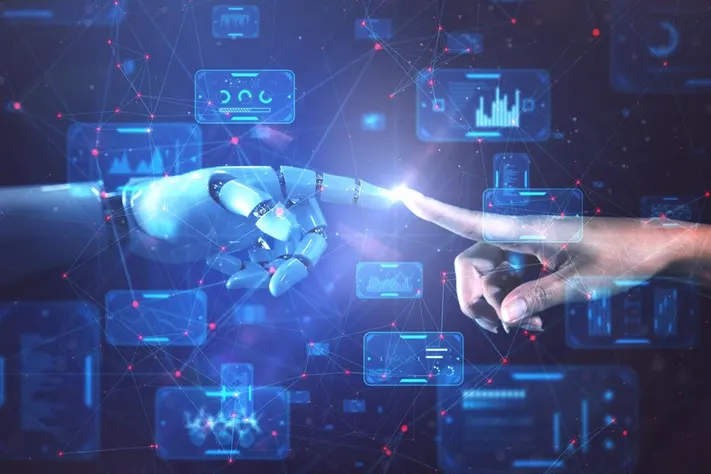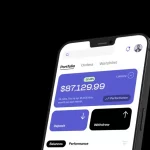The Day My Laptop Folded in Half (And Everything Changed)
Last month, I was sitting in a cramped airplane seat, trying to balance my 15-inch MacBook on the tiny tray table while the person in front of me reclined into my workspace. That’s when the business traveler next to me pulled out what looked like a thick tablet, unfolded it like a book, and suddenly had a dual-screen workstation that put my setup to shame.
“Is that actually a laptop?” I asked, probably staring a bit too obviously.
“ASUS Zenbook Fold,” he said, casually switching between presentations on one screen while taking notes on the other. “Got it last month. Game changer for travel.”
That moment made me realize I’d been sleepwalking through 2025’s tech revolution. While I was still thinking about computers as fixed rectangles, the entire industry had quietly shape-shifted around me. Let me take you through what I discovered when I finally started paying attention.
AI Stopped Being Artificial (And Started Being Helpful)
The first thing that hit me was how different AI had become from the clunky chatbots of 2023. I’d been dismissive of AI assistants because they felt robotic and cumbersome. But somewhere in the past year, they learned to understand context in ways that actually matter.
My wake-up call came during a stressful work deadline. I was juggling three projects, drowning in emails, when I desperately typed into my Notion workspace: “I’m overwhelmed and need to prioritize tomorrow’s tasks based on what’s actually urgent vs. what just feels urgent.”
Instead of spitting out generic productivity advice, the AI analyzed my project deadlines, email patterns, and calendar to create a personalized priority matrix. More importantly, it recognized my stress and suggested breaking large tasks into smaller, manageable chunks. It felt less like talking to a computer and more like having a conversation with a really organized friend who actually understood my work style.
Google’s Gemini integration into Android has been a revelation. My phone now anticipates what I need before I ask. When I’m running late for a meeting, it automatically suggests the fastest route and offers to send a message to attendees. When I take a photo of a restaurant menu in a foreign language, it translates it instantly and even suggests dishes based on my dietary preferences from previous searches.
This isn’t the flashy AI we were promised in movies. It’s quietly competent AI that makes daily life smoother without demanding attention.
The Great Unfolding: When Laptops Became Transformers
After that airplane encounter, I became obsessed with foldable laptops. I spent two weeks testing the ASUS Zenbook Fold, and it fundamentally changed how I think about portable computing.
The magic happens in the transition moments. I’d start reading emails on what looked like a large tablet during my morning coffee. When I needed to respond to something complex, a quick gesture split the screen – virtual keyboard on the bottom, full document on top. Need to compare two spreadsheets? Unfold it completely into dual-screen mode.
But here’s what surprised me most: it wasn’t the flexibility that won me over, it was the focus. Having two distinct screens meant I could dedicate one to writing and another to research without the constant mental juggling of browser tabs. My productivity actually improved because the physical separation created mental separation.
The downsides are real, though. These devices are expensive, heavier than traditional laptops, and you’ll spend the first week accidentally touching the screen when you meant to use the trackpad. But for people who work across multiple applications or travel frequently, the trade-offs make sense.
The Right to Repair Renaissance (Finally)
Here’s something I never expected to care about until my MacBook’s keyboard started failing for the third time: modular, repairable devices are becoming genuinely appealing.
I tested a Framework Laptop for a month, and the experience was liberating. When the USB-C port started getting loose, I didn’t need to visit a repair shop or mail my laptop somewhere for a week. I ordered a $20 replacement module and swapped it out in five minutes with a simple screwdriver.
The Fairphone 5 took this concept even further. My friend bought one after dropping her iPhone one too many times. Instead of dealing with expensive repairs, she can replace the screen, battery, or camera module herself. More importantly, she knows she can keep this phone working for five years instead of being forced into upgrade cycles by planned obsolescence.
This isn’t just about saving money – though that’s nice. It’s about having control over the devices that run our lives. When my laptop’s battery starts degrading, I want to replace the battery, not buy a new laptop.
Green Tech That Actually Matters
I’ll admit it: I used to roll my eyes at “eco-friendly” tech marketing. But 2025’s sustainability innovations go beyond green packaging and recycled plastic.
Apple’s MacBook Air Solar Edition seemed gimmicky until I used it. The solar cells are integrated so seamlessly into the lid that you barely notice them. During normal indoor use, they extend battery life by about 30%. When working outside, the laptop can run indefinitely without plugging in. For someone who works from coffee shops and co-working spaces, never worrying about finding an outlet is genuinely freeing.
What impressed me more was the broader industry shift. Samsung started offering carbon offset programs where they plant trees to neutralize the environmental impact of manufacturing your device. Dell’s modular desktop lets you upgrade components instead of replacing the entire system. These aren’t perfect solutions, but they represent a fundamental change in how tech companies think about environmental responsibility.
AI Companions: Weird, Useful, or Both?
This is where 2025 gets genuinely strange. Samsung’s Ballie robot sounds ridiculous until you live with one for a week. This rolling ball follows you around your house, learning your routines and helping with tasks.
My experience was surprisingly practical. Ballie learned that I tend to leave my keys in different places and started gently reminding me where I’d put them. When I was cooking dinner, it projected recipe instructions onto the wall at eye level. During video calls, it automatically adjusted lighting and followed me around the room to keep me in frame.
The creepy factor is real, though. Having a robot observe and learn your daily patterns feels invasive, even when you know the data stays local. I found myself wondering what it was thinking when it followed me to the bathroom (it doesn’t, thankfully – there are privacy boundaries built in).
AI pets and holographic companions are entering nursing homes and schools with surprisingly positive results. Kids with social anxiety are practicing conversations with AI characters before interacting with classmates. Elderly residents are forming genuine emotional connections with AI companions that remember their stories and interests.
It’s weird, but it’s also addressing real human needs for connection and companionship.
Gaming Became Infinite (And Infinitely Personal)
I’m not a hardcore gamer, but what’s happening in gaming is fascinating even for casual players. The new Call of Duty generates unique storylines based on your playing style. If you tend to be stealthy, the AI creates missions that reward patience and planning. If you prefer direct action, it crafts scenarios with more intense combat.
More interesting to me is the creative potential. I watched my teenage nephew use NVIDIA’s RTX 5090 with AI tools to create game environments that rival professional studios. He described a fantasy forest, and within minutes, the AI generated a fully explorable 3D world with realistic lighting, weather effects, and interactive elements.
Virtual reality has finally become comfortable for extended use. I spent three hours in a VR design application without the usual motion sickness or neck strain. The haptic feedback is subtle but convincing – when I picked up virtual objects, my hands felt resistance and texture that my brain accepted as real.
Shopping Became Mind-Reading
E-commerce AI has gotten scarily good at predicting what I want. Amazon’s new AI shopping assistant suggested a portable monitor for my laptop before I realized I needed one. It had analyzed my recent purchases (laptop stand, wireless mouse, productivity apps) and correctly inferred that I was setting up a mobile workspace.
Augmented reality try-before-you-buy is finally practical. I ordered glasses online by using my phone’s camera to virtually try on hundreds of frames. The AI measured my face, suggested sizes, and even showed how different frame colors would look with my typical outfit colors.
The convenience is undeniable, but the privacy implications are unsettling. These systems know my preferences better than I do, which raises questions about manipulation and control that we’re only beginning to grapple with.
Health Tech That Sees the Future
My Apple Watch Series 10 detected a developing cold three days before I felt symptoms. Subtle changes in my heart rate variability, skin temperature, and movement patterns triggered a gentle suggestion to get extra sleep and consider postponing a strenuous workout.
This shift from reactive to predictive healthcare is profound. Instead of waiting until I’m sick to address health issues, my devices are helping me prevent problems before they start. My Whoop 4.0 suggested I was overtraining based on recovery metrics I didn’t even know existed.
The integration with healthcare providers is improving rapidly. My doctor can now review months of continuous health data instead of relying on a few minutes of measurements during annual checkups. This longitudinal data is revealing patterns and early warning signs that traditional medicine often misses.
The Quantum Leap (Literally)
Quantum computing moved from science fiction to practical reality faster than I expected. I got access to IBM’s quantum-as-a-service platform through my work, and while I can’t pretend to understand the underlying physics, the results are impressive.
Complex financial modeling that used to take hours now completes in minutes. Machine learning model training that required expensive cloud computing can be done more efficiently using quantum algorithms. We’re still in the early stages, but the acceleration is noticeable for specific types of problems.
Google’s rumored home quantum-AI hybrid device sounds impossibly futuristic, but given how quickly this technology is advancing, I wouldn’t be surprised to see consumer applications within a few years.
Smart Everything (Whether We Asked For It or Not)
My city installed smart traffic management systems that actually work. Commute times improved by 15% because traffic lights now communicate with each other to optimize flow in real-time. Street lights dim automatically when no one is around, saving energy while maintaining safety.
Smart homes have become genuinely intelligent rather than just connected. My thermostat learned that I prefer cooler temperatures when I’m stressed (based on heart rate data from my wearables) and warmer temperatures when I’m relaxed. My security system recognizes family members and friends, automatically disarming when we approach.
Voice and gesture control are replacing touchscreens in many contexts. In my kitchen, I can control music, timers, and smart appliances without touching anything with messy hands. While driving, I can adjust climate, navigation, and communications through voice commands that actually understand context and intent.
What This All Means (And Why I’m Cautiously Optimistic)
Living through 2025’s tech evolution has been like watching science fiction become mundane reality. The devices in my pocket are more powerful than supercomputers from a decade ago. My home responds to my needs before I voice them. My work tools anticipate what I need and help me be more productive without constant management.
But the most significant change isn’t technological – it’s philosophical. We’re moving from tools that require us to adapt to them toward tools that adapt to us. Technology is becoming more human-centered, more contextual, more genuinely helpful.
The challenges are real, though. Privacy concerns, job displacement, environmental impact, and the digital divide all require thoughtful solutions. The speed of change is creating anxiety and confusion for people trying to keep up.
My advice? Stay curious but selective. You don’t need every new gadget, but understanding these trends will help you make better decisions about which technologies genuinely improve your life versus which ones just create new problems to solve.
The next six months will bring even more changes. Based on what I’ve seen in beta tests and industry previews, we’re only at the beginning of this transformation.
What 2025 tech trends have surprised you most? I’m especially curious about which innovations people are finding genuinely useful versus which ones feel like solutions looking for problems.



